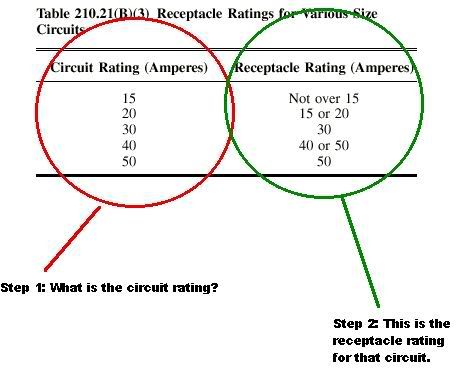I've having a running discussion (argument?) with someone who claims to have been a "practicing electrician and code inspector in 5 states" about the interpretation 210-21(b)(3).
He's telling me the receptacle ratings in Table 210-21(b)(3) are maximums, and it is OK to use smaller receptacle ratings. An example he gave is 3 20A receptacles on a 50A branch.
I maintain that "shall conform" means the recpectacle ratings shall conform to those listed in the table. Only the entry for 15A branches is a maximum. For 20A and 40A branches, two ratings are permissible, but for a 50A only a 50A is permissable.
I've never heard of his interpretation, it does not seem supported in the text. From an enginerring POV is seems unwise to permit portable lamps with 18 AWG cords to be protected by 50A overcurrent protection devices, which is a situation that his interpretation would permit.
He's telling me the receptacle ratings in Table 210-21(b)(3) are maximums, and it is OK to use smaller receptacle ratings. An example he gave is 3 20A receptacles on a 50A branch.
I maintain that "shall conform" means the recpectacle ratings shall conform to those listed in the table. Only the entry for 15A branches is a maximum. For 20A and 40A branches, two ratings are permissible, but for a 50A only a 50A is permissable.
I've never heard of his interpretation, it does not seem supported in the text. From an enginerring POV is seems unwise to permit portable lamps with 18 AWG cords to be protected by 50A overcurrent protection devices, which is a situation that his interpretation would permit.


